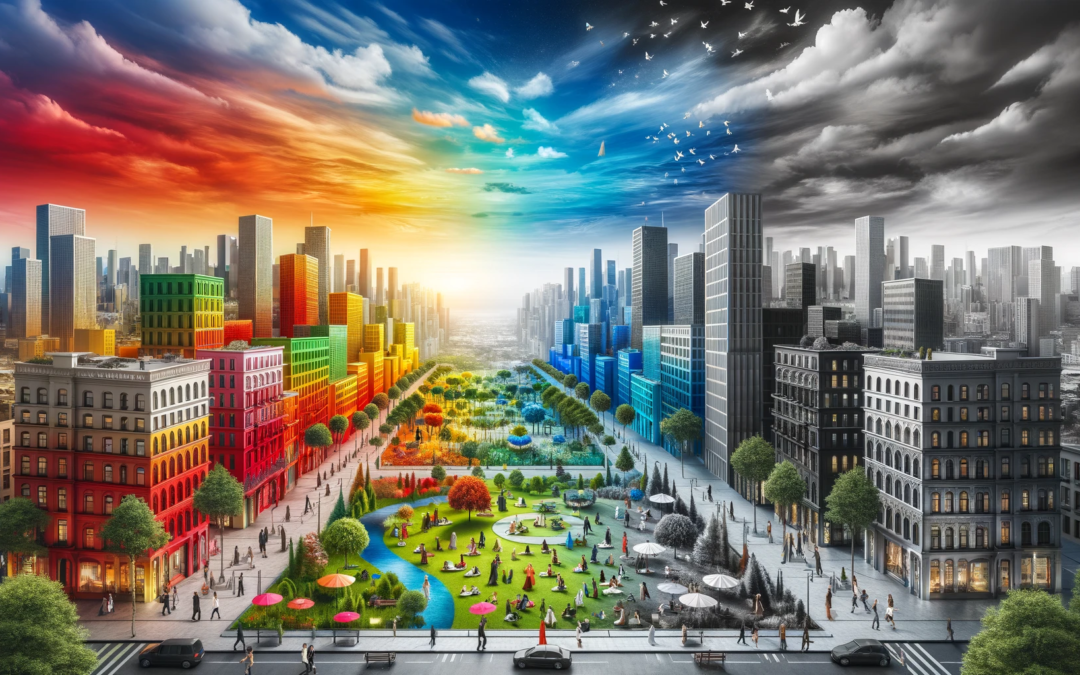Understanding Decolorization: More Than a Visual Trend
In the tapestry of modern society, a subtle yet profound trend has been emerging: the movement towards decolorization. This trend, extending beyond mere fashion or aesthetic choices, reflects a deeper shift in societal attitudes and values, with far-reaching implications for mental health.
Decolorization, in its essence, refers to the diminishing presence of vibrant colors in various facets of life – from architecture and urban planning to fashion and digital interfaces. This trend is epitomized by the increasing prevalence of monochrome colors, minimalist designs, and understated elegance. While at first glance, this might seem like a mere aesthetic shift, it is, in fact, a reflection of broader societal changes.
The Psychological Underpinnings: A Shift Towards Minimalism
The move towards decolorization coincides with the growing popularity of minimalism, a lifestyle that advocates for simplicity and purposefulness. This philosophy is rooted in the desire to declutter, not just physically but also mentally and emotionally. In a world overwhelmed by information and sensory overload, the calming effect of neutral colors and simple designs provides a much-needed respite for the mind.
Mental Health Implications: A Double-Edged Sword
The impact of decolorization on mental health is complex. On the positive side, the muted color palettes and clean lines often associated with this trend can create a sense of calm and order. For many, this can lead to reduced anxiety and a more focused mindset. However, the lack of vibrant colors and dynamic designs can also lead to a sense of monotony and dullness. This could potentially exacerbate feelings of depression or emotional numbness, particularly in individuals who derive energy and inspiration from vivid and varied environments.
The Urban Canvas: Decolorization in Cityscapes
One of the most visible manifestations of the decolorization trend is in urban environments. The modern cityscape is increasingly characterized by sleek, color-neutral buildings, public spaces, and infrastructures. While this lends a certain chic, futuristic aesthetic, it also strips away the vibrancy that often characterizes the heart and soul of a city. The psychological impact of living in such environments is significant, with studies suggesting that the lack of color and diversity in urban design can affect mood and general well-being.
The Digital Dimension: Screen Time and Color Usage
In the digital realm, decolorization manifests in the design of websites, apps, and user interfaces. The prevalence of minimalist, color-neutral designs in digital spaces aligns with the trend towards simplicity and focus. However, the extensive time spent on these monochromatic interfaces might contribute to a flattening of emotional experiences, as colors are known to evoke a wide range of psychological responses.
Balancing the Palette: The Need for Color Diversity
The trend of decolorization underscores the need for a balanced approach to color in our lives. Incorporating color, whether in personal spaces, urban design, or digital interfaces, is not just an aesthetic choice but a mental health consideration. Colors have the power to uplift, energize, and inspire, and their absence can lead to a sensory deficit in our daily experiences.
Conclusion: Navigating the Shades of Modern Life
As we navigate the shades of modern life, the trend towards decolorization offers both challenges and opportunities for mental health. While the calming effect of muted palettes and minimalist designs is undeniable, it is important to recognize the psychological need for color diversity. Striking a balance between simplicity and vibrancy, order and chaos, can help foster an environment that supports mental well-being. In the end, the colors we choose to surround ourselves with are not just a reflection of our aesthetic preferences but a mirror to our inner psychological landscapes.










